Background: In the process of creating a Zentangle one begins by lightly penciling a border and a “string”, generally a freeform shape, on the 3 1/2″ x 3 1/2″ (9 cm x 9 cm) tile of high quality paper, into which one then draws intricate patterns, “tangles” using a Sakura Micron Pen.
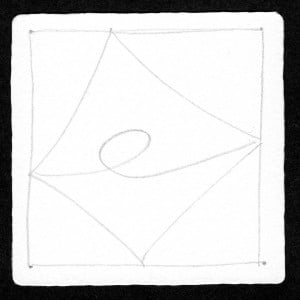
Example of a string – ready to add tangle patterns to create a Zentangle. Zentangle tiles are 3 1/2″ x 3 1/2″ square.
After a while you might feel like you want to get out of a “string rut” for your Zentangle® art.
While it’s true there are many ways to divide that little tile into sections for your tangle patterns, sometimes you want fresh ideas other than your own. Maybe something that will provide a real challenge, or conversely, something simplified.
Here are a few to help jump-start your imagination. Please feel free to add your ideas and suggestions in the comments below.
UPDATE: There is now a separate category on the pink alphabetic menu for STRINGS with a new string added every Saturday morning.
String Block
Some time ago CZT Vicki Murray wrote a post about overcoming what she terms “String Block”. Here are the ideas she suggests:
- Use a letter for a string
- Do a monogram
- Do a name
- Select a shape and repeat it then tangle the shapes
- Use a pre-strung Zentangle tile
- If you have a ZT partner, have them draw a string for you and you draw one for them
- Use your computer
- Change the scale of your work.
Check out Vicki’s post for an explanation of each and a few illustrated examples.
More Ideas
- Here’s an idea suggested to me by my Mom (thanks Mom!) when she passed along several of her quilting books. Quilt block patterns make great strings. If you search Google for “quilt patterns” and click on the Images option at the top left side of the search results page, you’ll come up with all kinds of images and ideas you can use as the bare bones for a Zentangle string. You can even get Google to show you just Clip Art within that category.
- Suzanne McNeill suggests using rubber stamp images as the starting point for a Zentangle. This idea offers a whole host of possibilities.
- To that idea I’d add stencils. There are many fairly simple stencils that lend themselves well to being a Zentangle string.
Images from the Web
While spending [a lot of] hours scouring the web for this page, I came across the image below, here. According to the figure’s caption, this “demonstrates the fantastic variety of standing wave patterns that can arise from a simple resonating system. A square steel plate is clamped at its midpoint and sprinkled with sand. It is then set into vibration either by bowing with a violin bow, or by pressing dry ice against it. The resultant standing wave patterns are revealed by the sand, that collects at the nodes of the oscillation where the vibration is minimal.” Now isn’t that a cool way to make patterns?
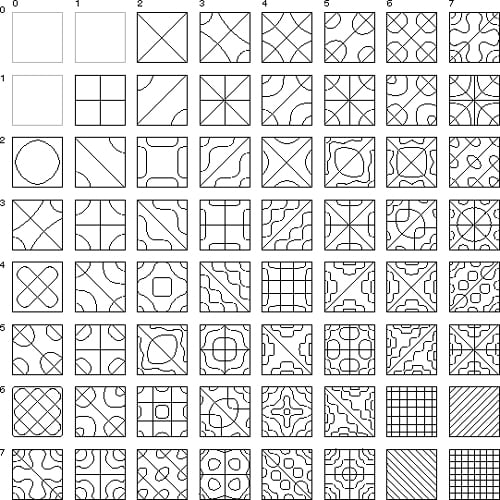
Some useful string ideas in there too, right?
Most of these suggestions are for fairly geometric strings but sometimes those are more fun to work with than abstract ones.
Let’s hear your suggestions for overcoming “string block”.
UPDATE: There is now a separate category on the pink alphabetic menu for STRINGS with a new string added every Saturday morning.
|
.oOo. |
|
Enhance your Zentangle experience while supporting TanglePatterns: |
|
LATEST EDITION! TanglePatterns.com TANGLE GUIDE, 2025 Edition |
|
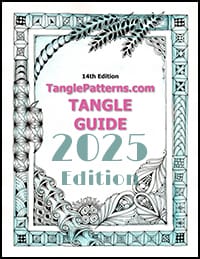 |
The 14th Edition of the TanglePatterns.com TANGLE GUIDE is an instant-download 117-page interactive digital eBook/PDF containing over 2,000 tangles on the site from May 2010 through December 31, 2024. It's a great resource and a must-have digital tool for using the site. Visit the STORE > E-BOOKS page and help keep TanglePatterns.com going by getting your copy now! |
|
"Linda, Thank you! I was relying on too few and getting stuck after 3 years of daily working with Zentangle. This has inspired me to ‘begin again’ with renewed excitement." ~ Barbara R. |
|
| See the BOOK REVIEWS page for more details on its features and view a sample page. Note: this is a digital product you download immediately when you place your order, nothing will be physically mailed to you. | |
| If you're new to Zentangle® and tangling, my TanglePatterns.com BEGINNER'S GUIDE TO ZENTANGLE is just what you need to get started. Also available en Français and en Español. | |
|
|
|
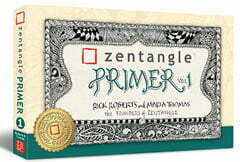 |
This is the only Zentangle book you'll ever need: the fabulous Zentangle PRIMER Vol 1. It's your CZT-in-a-book by the founders of Zentangle®. Visit the STORE tab on the top menu bar or click on the image. For more about the content and to read the rave reviews, visit the BOOK REVIEWS tab. |
| Now available in KINDLE format for $9.99. Spanish Edition here. Japanese Edition here. | |
| "Absolutely the best Zentangle Book yet! As an accomplished artist I used to think I did not need instruction on this art form. How wrong I was! My tangling improved by leaps and bounds after reading this book. If you think you have Zentangle down then you need this book more than ever!" ~ Kris H | |
|
|
|
|
.oOo. |
|

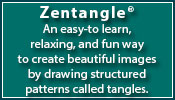


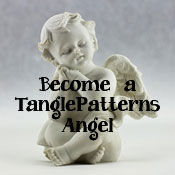

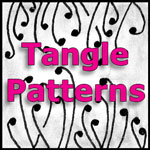
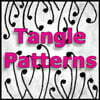
Hey, go to an Arts & Crafts store and purchase a set of ‘French Curves’ or a flexible french curve. Say Good-bye, to string block.
Another good idea! Thanks.
Awesome ideas. I also love the idea of the French curve. I have also tangled with no string and just let it go where it goes.
I love your new idea of tips & tools!
I live in Yuba City CA and there are no classes near to take any lessons. I would love to improve my skills and I am excited about your new information.
Thank you, Gail Stirnaman
Great ideas! I am beginning to see tangle patterns and string patterns in so many unlikely places. I sat in church last Sunday and drew a tangle from the stain glass window, and recently saw a great one in a carpet in a hotel where I was staying. They are everywhere! Look forward to more tips and tools.
Yes – carpet patterns!! Years ago I started sketching them for quilt patterns – now I’ll recycle them for strings!
Ditto for manhole covers!
This is a great site – thanks!
Look at EVERYTHING! There are awesome plants and leaves, flowers, the lawn, bricks and architecture, windows, trees – bark, leaves, branches, fences, wallpaper, fabrics, clothing, patterns are everywhere once you learn to see them!
I have tons of french curves and triangles and never gave it any thought to use them to create strings. I also have a collection of quilting patterns that would make great string patterns.
I also saw an idea for a string pattern from Rick on the Zentangle Newsletter. He took a piece of string or cord (but not sure what length it was) and let it drop randomly on his tile and traced around it as close as he can. I tried that a couple of times. Works a little better on the typical 3-1/2″ tile than a full sheet of paper or larger.
Since my first Zentangle class, I CAN’T help but look at absolutely everything as a pattern. I now keep a small notebook in by purse to jot down the pattern or string for later use. One of the most fun was the way birds were setting on a line all bunched together one morning. Get into the mind set of a child looking at everything as if it was the very first time you have seen something. Most of all HAVE FUN!
Thanks for the string pattern. Its very inspiring. Have taken the block off. As a new comer to Zentangle have got a question, how do you decide what to shade? and how much to shade.
Thanks in advace.
Hi and welcome to the Zentangle club. Glad you found this page and its comments about Strings helpful. I’ve added a new Tips on Shading page, that might help answer your questions. And if anyone else has some useful shading tips to add, please feel free to comment over there.
Thanks for all of the string pattern ideas. I create machine embroidery designs in redwork style and fill in the spaces with tangles. Each one is different.
http://good-times.webshots.com/photo/2875166200049106280bfcqCe
http://good-times.webshots.com/photo/2785969350049106280PjfAHm
Beautiful, in embroidery no less! Thanks for sharing.
I am new to ZT as well, but I do remember my drawing teacher giving the class a good shading trick.
Place a coin or a removable sticker on your work to indicate the light source. Shade everything as if the light were coming from that direction — anything farther away from the light would be in shadow.
We also used a white eraser or a kneaded eraser to add highlights.
String ideas — This one’s too obvious. Go back to your history books. Look up Celtic art. George Bain, Aidan Mehan, and Sheila Sturrock are all excellent authors who give very clear step-by-step instructions on knotwork, spirals, key patterns, etc.
Actually, the stings themselves could come from Celtic art. While they are usually filled in with mathematically precise key patterns, mazes, spirals, and knotwork, the outlines of carpet pages are wonderful geometric forms that would make a good foil for the freeform style of tangling.
I tried drawing strings and that was fun..but I’ve had more fun making pictures and filling them in – a clump of mushrooms, a couple of pumpkins, a rooster with lovely tail feathers, my house numbers (one pattern in each) and more. I even lightly traced a maple leaf and sketched in the main veins, which led to picking up an assortment of leaves and making a collection…a Christmas tree I used for my cards. For me, this is being more fun!
this site’s interesting! 🙂 I also find it very inspiring!very awesome way to decompress 😉
I let me daughter draw swirls on a paper and see if there are any interesting patterns.
I know this goes more along the lines of just doodling but it can be fun to pick an object (or even one with natural divisions like a turtle or orca whale which I’m working on now) and filling in those areas with different patterns. I also bought some stencils from the scrap-booking section of different size squares, circles, and ovals (at JoAnne’s you got all three for about ten bucks) and used those.
i close my eyes and scribble a few swirls
If you have a cricut die cut machine the sky is the limit for stencils!
what a great idea! i saved them to my computer so i never have to look far 🙂
I don’t very often use strings. I usually just shut my eyes and point somewhere on the tile and start there.
When I do make an actual string, I also find it’s fun, by holding the edges of the tile with your fingers and then shutting your eyes and whirling about with your pencil…….fingers stop you from heading off the tile and cavorting all over your desk!!
Celebrate randomness by taking a longish piece of string by one end, and snapping/throwing/dropping/swirling/’moving it however’ and letting it land onto different surfaces and in different wind conditions…. examine the different permutations or just take a photo to look at later. Use a garden hose or whatever to obtain unusual and random results. Take photos of cut grass patterns in water after a rain; imagine they form some gentle curves in addition to the angles. It is difficult to improve on the imagination of nature!
I have always loved the architecture and ART of Frank Lloyd Wright. Maybe I am a graphic artist at heart?!? Anyway, my first (and only) BIG piece of Zentangle art was a 9 x 12″ piece. My “strings” were drawn with both a ruler (to create some strong geometric “grounding”) and then varying sizes of round items (bowls, glasses, plates, etc). I just covered my page with lines and circles (nothing “flowy”), quite happily and with no judgment, and then when I was pleased with the overall design, I just started tangling each section, again with no judgment, in the spirit of Zentangle. I am a color-lover, so when I was done, I went back and color-penciled in EVERYTHING. So far, it’s the work I am most pleased with (and the one thing I have not given away!). Warning, though: this process takes HOURS AND HOURS (can’t be sure, but I would say this piece took maybe 15-20 hours!), but for me, it was SO fulfilling, and the results are magnificent. I don’t normally frame my artwork, but this I did, and I get such a tickle when I see it and think “I DID that!” Worth a try… Just my 2 cents, Fellow Adventurous Zentanglers!
I have some old Dover copyright-free books of stained glass patterns. These patterns make great “strings” for Zentangle Inspired Art.
Thanks for your ideas this is new to me. A retiree with plenty of time to meditate and create something individual. It is great what others say they give me ideas to relax forget things and create. Thanks again.
So happy to have found this great website. Am very new to Zentangle, but this site is full of ideas to get me started and on my way to “Tangling”. Thank you everyone.
Love the fluid motion.
I’m with Cynthia, you Zentanglers have some wonderful ideas. I will go and get my french curves out of the cupboard, which I have never found a use for. Thanks Marguerite.
Anyone in or near Kerrville, Texas? Would love to get a group together to tangle !
I have found strings in coloring books. Both kid ones and adult ones.